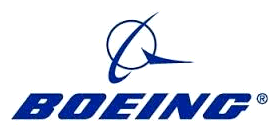 Boeing forecasts $9 trillion aerospace market opportunities over next decade
Boeing forecasts $9 trillion aerospace market opportunities over next decade
The 2021 Boeing Market Outlook(BMO) – Boeing's analysis of long-term market dynamics – states that commercial airplanes and services are showing signs of recovery, while the global defence, space and government services markets have remained stable.
The BMO projects a $9 trillion market over the next decade for aerospace products and services that Boeing addresses. The forecast is up from $8.5 trillion a year ago, and up from $8.7 trillion in the pre-pandemic 2019 forecast, reflecting the market’s continued recovery progress.
“As our industry recovers and continues to adapt to meet new global needs, we remain confident in long-term growth for aerospace,” said Boeing Chief Strategy Officer Marc Allen. “We are encouraged by the fact that scientists have delivered vaccines more rapidly than imaginable and that passengers are demonstrating strong confidence in airplane travel.”
Commercial Market Outlook
The new Commercial Market Outlook (CMO) reflects that the global market is recovering largely as Boeing projected in 2020. Demand for domestic air travel is leading the recovery, with intra- regional markets expected to follow as health and travel restrictions ease, followed by long-haul travel’s return to pre-pandemic levels by 2023 to 2024.
Within the Boeing Market Outlook, the CMO projects 10-year global demand for 19,000 commercial airplanes valued at $3.2 trillion. Boeing’s 20-year commercial forecast through 2040 projects demand for more than 43,500 new airplanes valued at $7.2 trillion, an increase of about 500 planes over last year’s forecast.
In a significant area of growth, projected demand has increased for dedicated freighters, including new and converted models. With sustained demand for air cargo tied to expanding e-commerce and air freight’s speed and reliability, the CMO projects the global freighter fleet in 2040 will be 70% larger than the pre-pandemic fleet.
“The aerospace industry has made important progress in the recovery, and Boeing’s 2021 forecast reflects our confidence in the resilience of the market,” said Stan Deal, president and CEO, Boeing Commercial Airplanes. “While we remain realistic about ongoing challenges, the past year has shown that passenger traffic rebounds swiftly when the flying public and governments have confidence in health and safety during air travel. Our industry continues to serve an essential role of bringing people together and transporting critical supplies.”
Services Market Outlook
Boeing forecasts a $3.2 trillion market opportunity for its served services market with commercial, business and general aviation services representing $1.7 trillion and government services representing $1.5 trillion through 2030.
Digital solutions, including analytics offerings, interiors modifications and freighter conversions have proven to be bright spots in the long-term services landscape as customers adjust to leaner operations for future growth and meet strong cargo demand.
Training services will see a near-term increase in demand as personnel transition to new aircraft types, maintain certifications and return from pandemic-related pauses in active service. Demand for services dependent on aircraft utilisation, such as maintenance, parts and supply chain, will continue to follow the market recovery.
“Our customers are preparing for growth, and we see fleet modifications and continued parts consumption going hand in hand with the global fleet expansion,” said Ted Colbert, president and CEO, Boeing Global Services. “This demand will be coupled with the continued adoption of digital tools and services to enhance fleet readiness, reliability and efficiency.”
Defence and Space Market Outlook
The BMO also projects the defece and space market opportunity will remain consistent with last year’s forecast at $2.6 trillion during the next decade. These large, stable markets have enduring demand driven by geopolitical and security challenges. This spending projection continues to reflect the ongoing importance of military aircraft, autonomous systems, satellites, spacecraft and other products for national and international defense, with 40 percent of expenditures expected to originate outside of the United States.
“While we’ve seen resiliency and stability in the global defence and space market, the threat environment continues to evolve,” said Leanne Caret, president and CEO of Boeing Defense, Space & Security. “Winning the future fight will require speed and flexibility, and Boeing is committed to designing, testing, building and sustaining in a way that will enable our customers to adapt at the speed of relevance and derive the most value from our platforms for decades to come. Our mission – which is grounded in safety, quality and integrity – is to deliver the most digitally advanced, simply and efficiently produced solutions that are intelligently supported to our global customers.”
Pilot and Technician Outlook
As the commercial aviation industry continues to make progress toward recovery from the pandemic, a steady increasing supply of personnel and effective training remain critical to retain the health, safety and prosperity of the aviation ecosystem. Long-term demand for newly qualified aviation personnel remains strong, with projected demand for more than 2.1 million personnel needed to fly and maintain the global commercial fleet over the next 20 years, including 612,000 pilots, 626,000 maintenance technicians and 886,000 cabin crew members.
